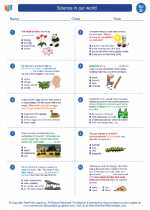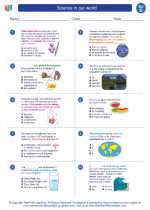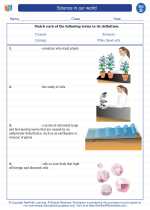Material Science
Material science is the study of materials and their properties, as well as the development of new materials for various applications. Materials are substances that have a mass and occupy space. They can be classified as solids, liquids, or gases based on their physical properties.
Types of Materials
Materials can be classified into several categories based on their composition and properties:
- Metals: Metals are elements or compounds that have high conductivity, luster, and malleability. Examples include iron, copper, and aluminum.
- Polymers: Polymers are large molecules composed of repeating structural units. They have a wide range of properties and are used in plastics, fibers, and rubber.
- Ceramics: Ceramics are inorganic, non-metallic materials that are typically hard and brittle. Examples include glass, porcelain, and cement.
- Composites: Composites are materials made from two or more constituent materials with significantly different physical or chemical properties. They can be designed to have specific properties for different applications.
- Advanced Materials: This category includes materials such as semiconductors, nanomaterials, and biomaterials, which have unique properties and applications in cutting-edge technologies.
Properties of Materials
Materials have various properties that determine their behavior and suitability for specific uses:
- Mechanical Properties: These properties include strength, hardness, elasticity, and toughness, which are important for structural and mechanical applications.
- Thermal Properties: Thermal conductivity, expansion, and resistance to heat are crucial for materials used in high-temperature environments.
- Electrical Properties: Conductivity, resistivity, and dielectric strength are essential for materials used in electrical and electronic devices.
- Optical Properties: Materials with specific optical properties, such as transparency, reflectivity, and refractive index, are used in optics and display technologies.
- Chemical Properties: Resistance to corrosion, reactivity, and stability in different chemical environments are vital for materials used in chemical processing and storage.
Applications of Materials
Materials are used in a wide range of applications across various industries:
- Construction: Materials such as concrete, steel, and wood are used in building structures and infrastructure.
- Transportation: Metals, composites, and polymers are used in vehicles, aircraft, and marine vessels to provide strength and lightweight properties.
- Electronics: Semiconductors, conductive metals, and insulating polymers are essential for electronic devices and circuits.
- Medical: Biomaterials, polymers, and ceramics are used in medical implants, devices, and pharmaceutical packaging.
- Energy: Materials play a crucial role in energy generation, storage, and transmission, such as in solar panels, batteries, and power cables.
Study Guide
To understand material science, it's essential to study the following topics:
- Classification of Materials
- Structure and Properties of Materials
- Material Testing and Characterization
- Material Processing and Manufacturing
- Applications of Materials in Engineering and Technology
By mastering these concepts, you will gain a comprehensive understanding of materials and their significance in various industries and technologies.
Feel free to explore the world of materials and their fascinating properties!
.◂Science Worksheets and Study Guides Fourth Grade. Science in our world

 Worksheet/Answer key
Worksheet/Answer key
 Worksheet/Answer key
Worksheet/Answer key
 Worksheet/Answer key
Worksheet/Answer key
 Vocabulary/Answer key
Vocabulary/Answer key
